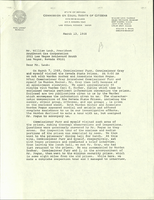Search the Special Collections and Archives Portal
Search Results
Nevada Statehood Commemorative U.S. Postage Stamps and Coin
Identifier
Abstract
The Nevada Statehood Commemorative U.S. Postage Stamps and Coin collection contains one sheet of the 1964 Nevada Statehood Centennial Stamp, printed from plate number 27798, and one proof copy of the 1964 Nevada Centennial Medallion.
Archival Collection
William Fulton Papers
Identifier
Abstract
The William Fulton Papers (1993-1996) contains Fulton's research files used in writing his book,
Archival Collection

Transcript of interview with Ray Cutright, April 22, 1981
Date
Archival Collection
Description
On April 22, 1981, Ray Cutright (born 1902 in French Creek, West Virginia) provided brief a narrative-style oral history about his work as a boater in the Colorado River during the building of Hoover Dam. Cutright talks about his experiences in operating a boat that carried both tourist passengers and workers to and from the site of the Hoover Dam. He also provides a few specific experiences, including what it was like navigating the river.
Text

Transcript of interview with Fermin De Leon by Generoso E. Sayon, March 15, 1981
Date
Archival Collection
Description
Text
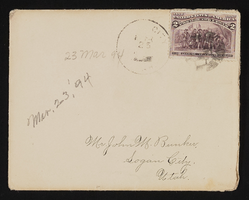
Letter and envelope from Mary Etta Syphus, Provo, Utah to John M. Bunker, Logan Utah
Date
Archival Collection
Description
From the Syphus-Bunker Papers (MS-00169). The folder contains an original handwritten letter, an envelope, a typed transcription of the same letter, and a copy of original letter attached.
Text
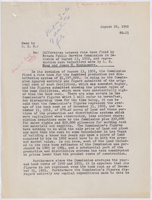
Memo from Edward C. Renwick to E. E. Bennett about the purchase price given to the Las Vegas Valley Water District, August 26, 1952
Date
Archival Collection
Description
Detailed discussion of why the purchase price set by the Nevada Public Service Commission for the purchase by the Las Vegas Valley Water District was too low.
Text
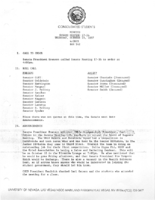
Meeting minutes for Consolidated Student Senate University of Nevada, Las Vegas, October 15, 1987
Date
Archival Collection
Description
Text
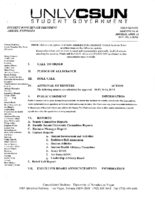
Meeting minutes for Consolidated Student Senate, University of Nevada, Las Vegas, April 24, 2006
Date
Archival Collection
Description
Text
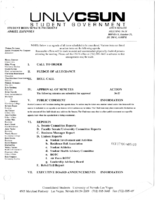
Meeting minutes for Consolidated Student Senate, University of Nevada, Las Vegas, October 23, 2006
Date
Archival Collection
Description
Text

